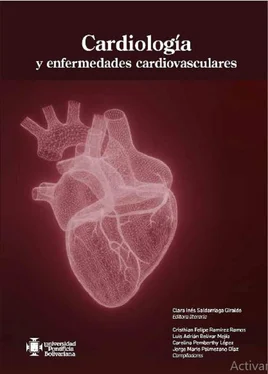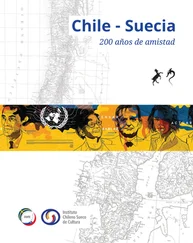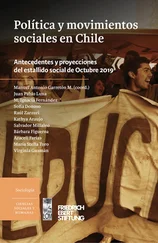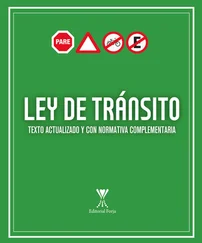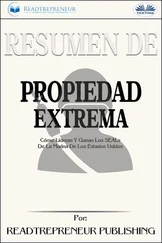15. Catapano AL, Graham I, De Backer G, et al. 2016 ESC/EAS guidelines for the management of dyslipidaemias. Eur Heart J. 2016;37(39):2999-3058. https://doi.org/10.1093/eurheartj/ehw272
16. Mytilinaiou M, Kyrou I, Khan M, et al. Familial hypercholesterolemia: new horizons for diagnosis and effective management. Front Pharmacol. 2018;9(707):1-29. https://doi.org/10.3389/fphar.2018.00707
17. Wilson PW, D’Agostino RB, Levy D, et al. Prediction of coronary heart disease using risk factor categories. Circulation. 1998;97(18):1837-1847. https://doi.org/10.1161/01.CIR.97.18.1837
18. Lloyd-Jones DM, Braun LT, Ndumele CE, et al. Use of risk assessment tools to guide decision-making in the primary prevention of atherosclerotic cardiovascular disease: a special report from the American Heart Association and American College of Cardiology. J Am Coll Cardiol. 2019;73(24):3153-3167. DOI: 10.1016/j.jacc.2018.11.005
19. Munoz, OM, Rodríguez NI, Ruiz A, et al. Validación de los modelos de predicción de Framingham y PROCAM como estimadores del riesgo cardiovascular en una población colombiana. Rev Esp Cardiol. 2014;21(4):202-212. https://doi.org/10.1016/j.rccar.2014.02.001
20. Hajifathalian K, Ueda P, Lu Y, et al. A novel risk score to predict cardiovascular disease risk in national populations (Globorisk): a pooled analysis of prospective cohorts and health examination surveys. Lancet Diabetes Endocrinol. 2015;3(5):339-355. https://doi.org/10.1016/S2213-8587(15)00081-9
21. Grundy SM, Stone NJ, Bailey AL, et al. 2018 AHA/ACC/AACVPR/AAPA/ABC/ACPM/ADA/AGS/APhA/ASPC/NLA/PCNA guideline on the management of blood cholesterol: executive summary: a report of the American College of Cardiology/American Heart Association Task Force on Clinical Practice Guidelines. J Am Coll Cardiol. 2019;73(24):3168-3209. DOI: 10.1016/j.jacc.2018.11.002
22. Domanski MJ, Fuster V, Diaz-Mitoma F, et al. Next steps in primary prevention of coronary heart disease: rationale for and design of the ECAD trial. J Am Coll Cardiol. 2015;66(16):1828-1836. DOI: 10.1016/j.jacc.2015.08.857
23. Ference BA, Graham I, Tokgozoglu L, et al. Reprint of: Impact of lipids on cardiovascular health: JACC Health Promotion Series. J Am Coll Cardiol. 2018;72(23 Part B):2980-2995. DOI: 10.1016/j.jacc.2018.10.021
24. Piepoli MF, Hoes AW, Agewall S, et al. 2016 European Guidelines on cardiovascular disease prevention in clinical practice: The Sixth Joint Task Force of the European Society of Cardiology and Other Societies on Cardiovascular Disease Prevention in Clinical Practice (constituted by representatives of 10 societies and by invited experts) Developed with the special contribution of the European Association for Cardiovascular Prevention & Rehabilitation (EACPR). Eur Heart J. 2016;37(29):2315-2381. https://doi.org/10.1093/eurheartj/ehw106
25. Estruch R, Ros E, Salas-Salvadó J, et al. Primary prevention of cardiovascular disease with a Mediterranean diet supplemented with extra-virgin olive oil or nuts. N Engl J Med. 2018;378(25):e34. DOI: 10.1056/NEJMoa1800389
26. Bakker-Arkema RG, Davidson MH, Goldstein RJ, et al. Efficacy and safety of a new HMG-CoA reductase inhibitor, atorvastatin, in patients with hypertriglyceridemia. JAMA. 1996;275(2):128-133. doi:10.1001/jama.1996.03530260042029
27. Hunninghake DB, Stein EA, Bays HE, et al. Rosuvastatin improves the atherogenic and atheroprotective lipid profiles in patients with hypertriglyceridemia. Coron Artery Dis. 2004;15(2):115-123.
28. Lee M, Saver JL, Towfighi A, et al. Efficacy of fibrates for cardiovascular risk reduction in persons with atherogenic dyslipidemia: a meta-analysis. Atherosclerosis. 2011;217(2):492-498. https://doi.org/10.1016/j.atherosclerosis.2011.04.020
29. Ponte CI, Isea-Perez JE, Lorenzatt AJ, et al. Dislipidemia aterogénica en Latino América: prevalencia, causas y tratamiento. Rev Venez Endocrinol Metab. 2017;15(2):106-129. Disponible en: https://www.redalyc.org/articulo.oa?id=375552816006
30. Bhatt DL, Steg PG, Miller M, et al. Cardiovascular risk reduction with icosapent ethyl for hypertriglyceridemia. N Engl J Med. 2019;380(1):11-22. DOI: 10.1056/NEJMoa1812792
31. Manson JE, Cook NR, Lee IM, et al. Marine n-3 fatty acids and prevention of cardiovascular disease and cancer. N Engl J Med. 2019;380(1):23-32. DOI: 10.1056/NEJMoa1811403
32. Orringer CE, Jacobson TA, Maki KC. National Lipid Association Scientific Statement on the use of icosapent ethyl in statin-treated patients with elevated triglycerides and high or very-high ASCVD risk. J Clin Lipidol. 2019;13(6):860-872. https://doi.org/10.1016/j.jacl.2019.10.014
33. Cannon CP, Blazing MA, Giugliano RP, et al. Ezetimibe added to statin therapy after acute coronary syndromes. N Engl J Med. 2015;372(25):2387-2397. DOI: 10.1056/NEJMoa1410489
34. Robinson JG, Jayanna MB, Brown AS, et al. Enhancing the value of PCSK9 monoclonal antibodies by identifying patients most likely to benefit. A consensus statement from the National Lipid Association. J Clin Lipidol. 2019;13(4):525-537. https://doi.org/10.1016/j.jacl.2019.05.005
35. Sabatine MS, Giugliano RP, Keech AC, et al. Evolocumab and clinical outcomes in patients with cardiovascular disease. N Engl J Med. 2017;376(18):1713-1722. DOI: 10.1056/NEJMoa1615664
36. Lloyd-Jones DM, Morris PB, Ballantyne CM, et al. 2017 focused update of the 2016 ACC expert consensus decision pathway on the role of non-statin therapies for LDL-cholesterol lowering in the management of atherosclerotic cardiovascular disease risk: a report of the American College of Cardiology Task Force on Expert Consensus Decision Pathways. J Am Coll Cardiol. 2017;70(14):1785-1822. DOI: 10.1016/j.jacc.2017.07.745
37. The lipid research clinics coronary primary prevention trial results. I. Reduction in incidence of coronary heart disease. JAMA. 1984;251(3):351-364. DOI: 10.1001/jama.1984.03340270029025
38. Davidson MH, Clark JA, Glass LM, et al. Statin safety: an appraisal from the adverse event reporting system. Am J Cardiol. 2006;97(8):S32-S43. https://doi.org/10.1016/j.amjcard.2005.12.008
39. Naci H, Brugts J, Ades T. Comparative tolerability and harms of individual statins: a study-level network meta-analysis of 246 955 participants from 135 randomized, controlled trials. Circ Cardiovasc Interv. 2013;6(4):390-399. https://doi.org/10.1161/CIRCOUTCOMES.111.000071
40. Adhyaru BB, Jacobson TA. Safety and efficacy of statin therapy. Nat Rev Cardiol. 2018;15:757-769. https://doi.org/10.1038/s41569-018-0098-5
41. Olsson AG, Angelin B, Assmann G, et al. Can LDL cholesterol be too low? Possible risks of extremely low levels. Intern. Med. J. 2017;281(6):534-553. https://doi.org/10.1111/joim.12614
42. Giugliano RP, Mach F, Zavitz K, et al. Cognitive function in a randomized trial of evolocumab. N Engl J Med. 2017;377(7):633-643. DOI: 10.1056/NEJMoa1701131
43. Schwartz GG, Steg PG, Szarek M, et al. Alirocumab and cardiovascular outcomes after acute coronary syndrome. N Engl J Med. 2018;379(22):2097-2107. DOI: 10.1056/NEJMoa1801174
Falla cardiaca con fracción de eyección preservada
Cristhian Felipe Ramírez Ramos
Clara Inés Saldarriaga Giraldo
Resumen
La importancia clínica de la falla cardiaca con fracción de eyección preservada del ventrículo izquierdo (FCFep) es cada vez mayor. Se espera que sea el fenotipo dominante de la enfermedad. La mejoría en el entendimiento de la enfermedad ha mostrado que es una afección heterogénea en la que se da una interrelación genética, enfermedades del estilo de vida y alta carga de trastornos crónicos. Esta enfermedad se caracteriza por disfunción diastólica, alteración de la compliance e hipocinesia con síntomas como disnea, intolerancia al ejercicio y fatiga. La mortalidad y la tasa de supervivencia acumulada son iguales que para los pacientes con falla cardiaca con fracción de eyección del ventrículo izquierdo (FEVI) reducida. Ningún agente terapéutico ha mostrado efectividad en este subtipo de pacientes, por lo que en la actualidad se investiga de manera activa para poder ofrecer medidas que modifiquen su curso.
Читать дальше
